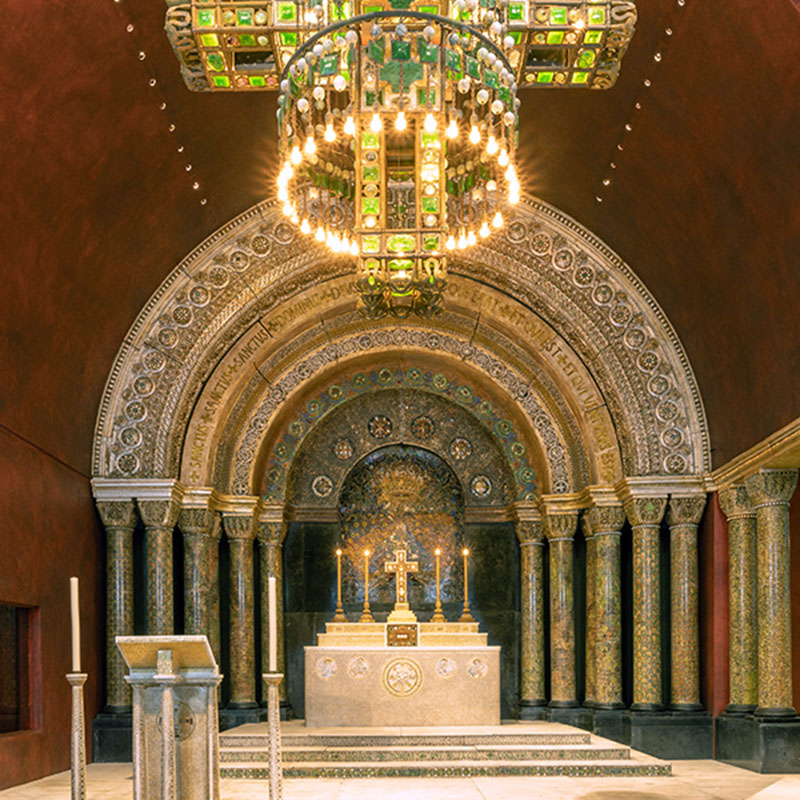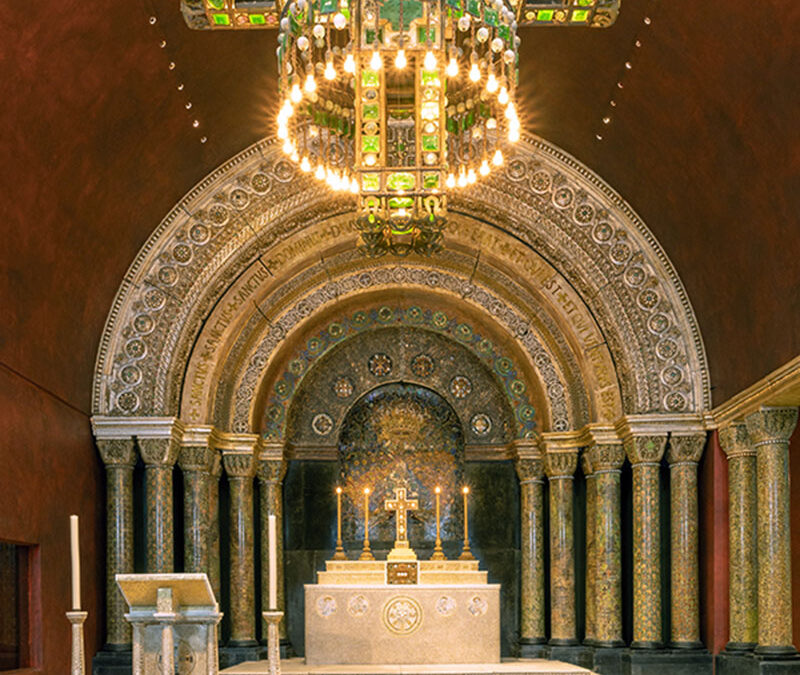
| Maker | Louis Comfort Tiffany |
| Date of Creation | c. 1893 |
| Location | New York City |
| Materials | Plaster, mosaic, and glass |
| Institution | The Charles Hosmer Morse Museum of American Art |
| Credit Line | N/A |
| Accession Number | N/A |
| Photo Credit | The Charles Hosmer Morse Museum of American Art |
In 1893, Louis Comfort Tiffany (1848–1933) created a chapel interior for the Tiffany Glass and Decorating Company exhibit at the 1893 World’s Columbian Exposition. A tour de force of design and a virtuoso performance in the arts of mosaic and glass, the chapel was a sensation and brought the already successful designer to even greater heights of popularity both in America and abroad. After the fair, Tiffany reinstalled the chapel at his studios in New York City, inviting the public to experience the display that had been so popular in Chicago. In 1898, the chapel was purchased by Celia Whipple Wallace and donated to New York’s Cathedral Church of Saint John the Divine, then still under construction. Although used for services for about ten years, the chapel eventually fell into disrepair in the cathedral’s crypt, its very existence threatened. At that time, concerned about the chapel’s fate, Tiffany reacquired the chapel, restored it, and installed it in a small building on the grounds of his Long Island estate, Laurelton Hall, where it remained until his death. In 1959, Morse Museum founder Jeannette McKean and first Director Hugh McKean acquired the remains of the chapel at Laurelton Hall. In the years following, they reassembled virtually all of the furnishings and windows that had been dispersed when the estate was sold following Tiffany’s death. With the exception of two of the four benches, all of the elements in the Museum’s chapel exhibit are original to Tiffany, and most date to the 1893 Exposition. These include the decorative moldings, altar floor, carved plaster arches, marble and glass-mosaic furnishings, four leaded glass windows, 16 glass-mosaic encrusted columns, and a ten-foot by eight-foot electrified chandelier. The non-historical parts of the chapel—walls, nave floor, and ceilings—are based on available knowledge of Tiffany’s installations in Chicago and at Laurelton Hall.

